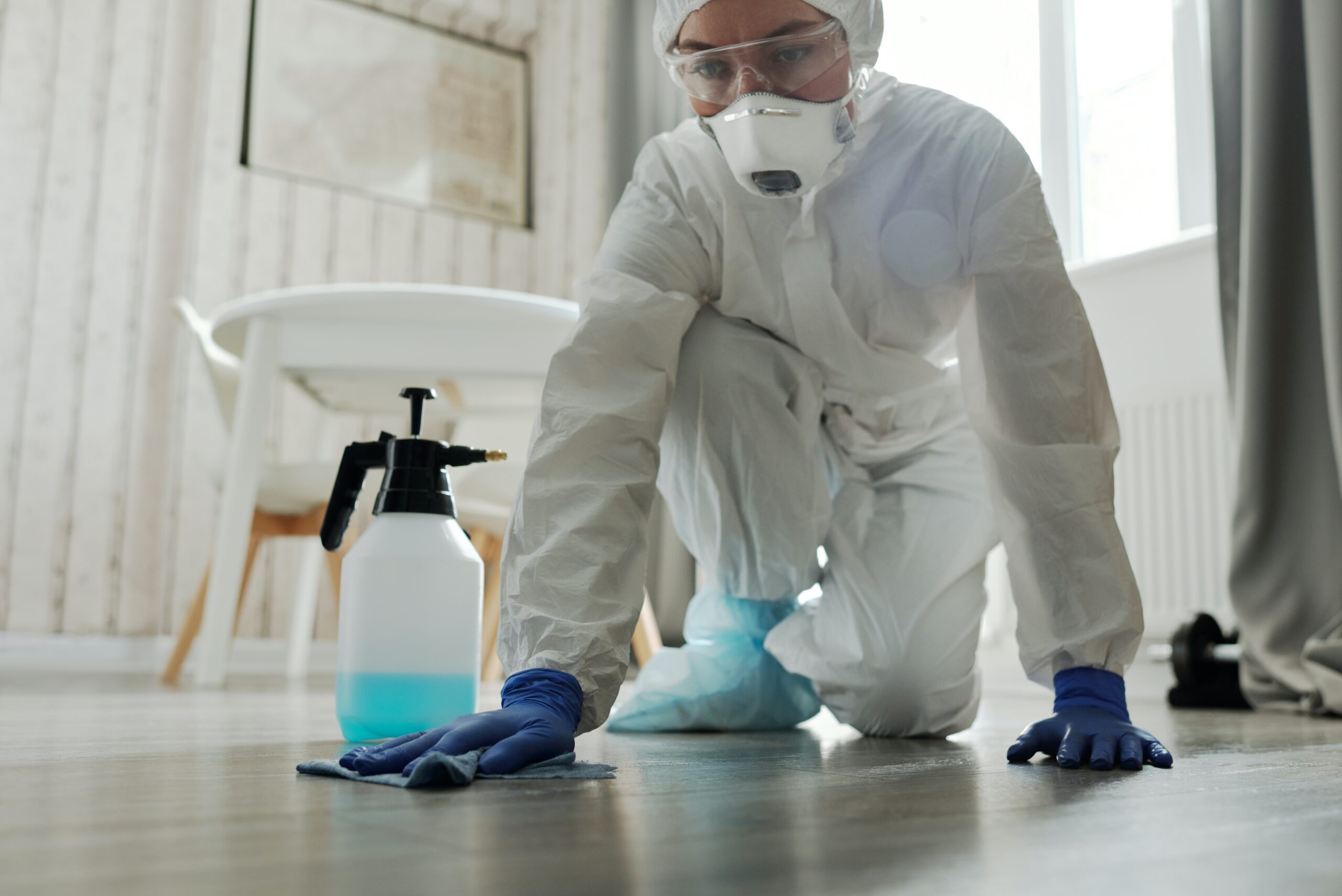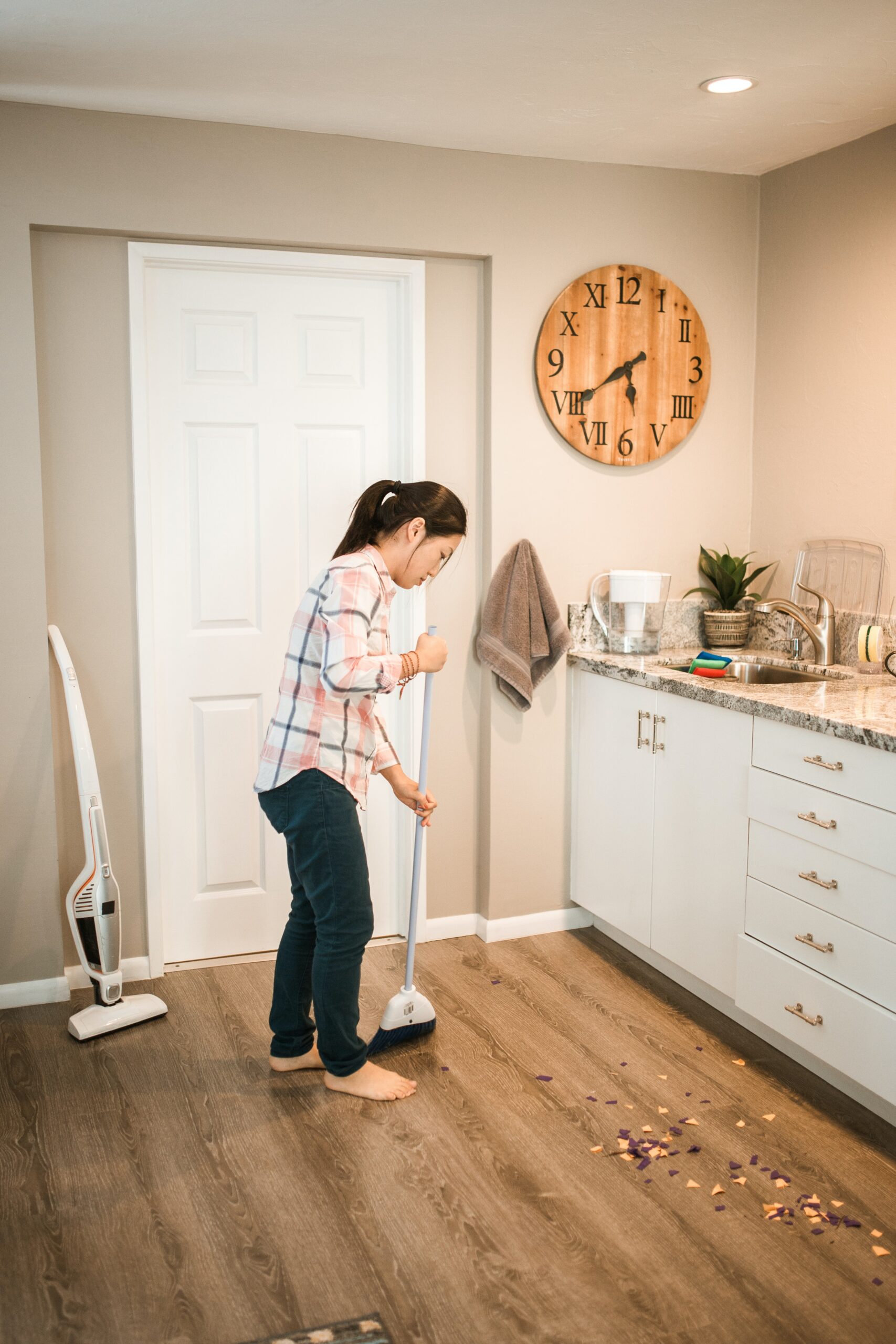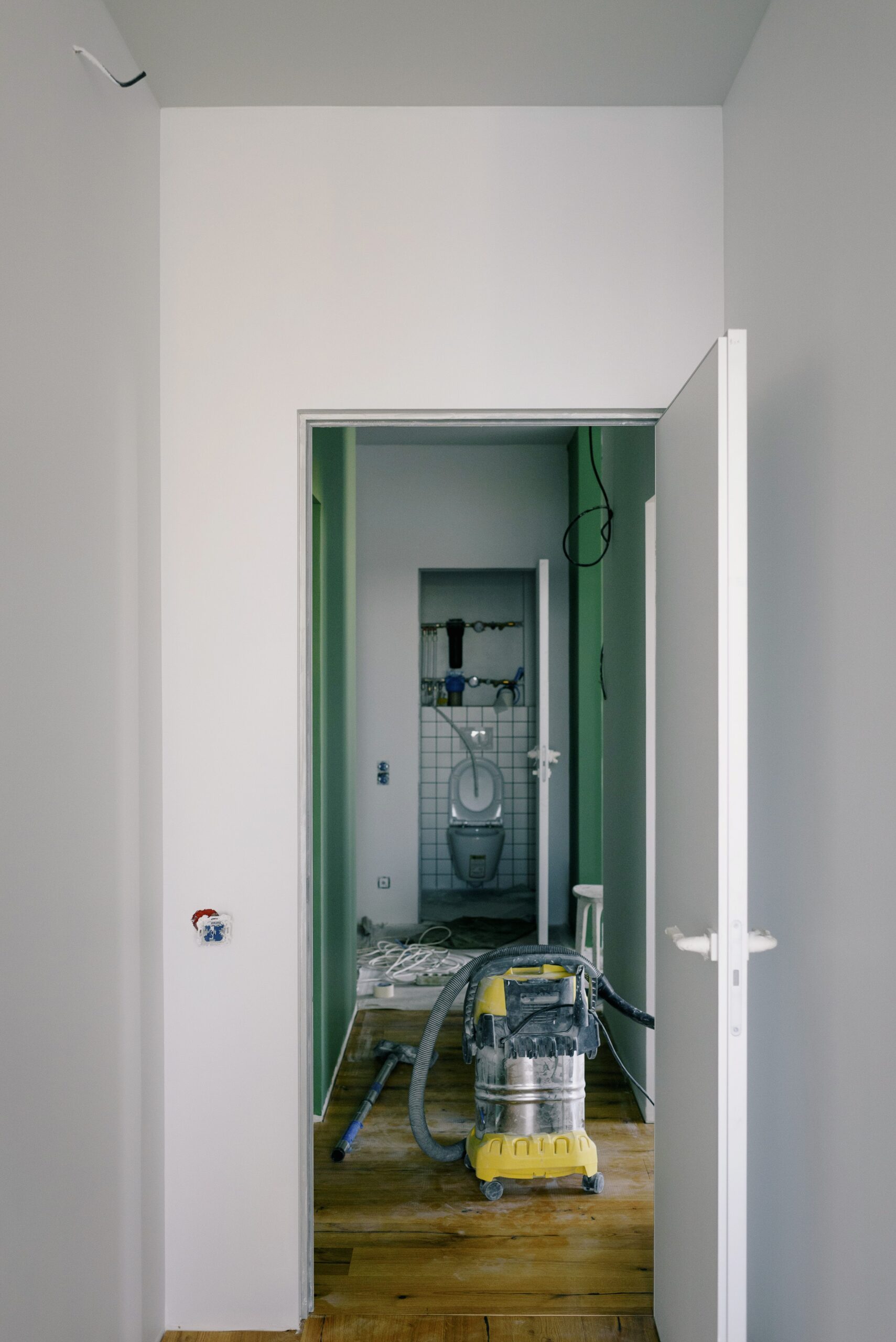Few flooring options create the same air that hardwood floors do. By combining wood, sophistication, and durability, you can always rest assured that you’ve made the right choice. However, hardwood floorings require adequate care and maintenance so you can keep them shining and elegant. Whether you’re wondering about the best way to take care of your hardwood floor or you’re thinking of changing your flooring, here’s everything you need to know about cleaning and maintaining hardwood.
1. Clean Spills Swiftly
As a rule of thumb, the faster you clean the mess, the easier it is to clean. It’s going to be a big hassle if you leave the spills until they dry out or, worse, stain the hardwood. Make sure to clean the spills immediately and swiftly using a slightly damp soft piece of cloth. Next, make sure to leave it to dry out while limiting the humidity in the air to preserve its texture. Moisture and wetness can affect the hardwood in different ways, either forcing it to shrink or swell. For the ultimate hardwood environment, keep your room temperature ranging between 60 and 80 degrees Fahrenheit and between 30 to 50 percent humidity. Speaking of wetness, avoid walking on the floors using wet shoes, slippers, or bare feet.
2. Follow a Regular Cleaning Routine (Clean Early, Clean Often)
Many people wonder how often they should clean their hardwood floors. Whether it’s traditional or engineered hardwood, their cleaning routine is almost identical. To maintain cleanliness and preserve the quality of the floors, it’s best to sweep the floors daily using a soft broom or a dust mop. This will help you prevent dust, dirt, and pet hair from accumulating. Vacuuming your floors should be done weekly or biweekly, depending on the traffic and use. While you’re vacuuming, avoid using a beater bar, as they can scratch the hardwood surface. Instead, opt for the floor brush.
Taking on that maintenance task and cleaning is the best method to overcome the obstacles in maintaining hardwood floors. Clean frequently and early. Sweeping and/or vacuuming your floors everyday is the best way to keep them clean. Cleaning up a little bit every day helps keep your floors from accumulating a lot of debris, dust, or fluids.
Mop the floor once or twice a week, if necessary. You might find yourself mopping more frequently if you live in an area of the country with a lot of moisture, snow in the winter, or other natural conditions to deal with the amount of dirt and liquid that could be dragged into the home.
3. Address Different Stains Accordingly
The kind of stain will dictate how you should address it. For ordinary water spills, drying it with a piece of microfiber should suffice, but what if the spilled substance leaves some stains? Even worse, what if the stain dries out? Following the advice of the hardwood experts at woodfloorscleaner.com, the first thing you should do is to assess the finishing of your flooring. Stains that seep into the lower lawyers signify a soft finish, while those that remain on the surface mean your flooring has a hard finish. Hard finished-floors can easily be cleaned using a wet cloth, but soft finished ones can be trickier, so it’s better to consult with an expert.
Generally speaking, if the stains are left until they dry out, you’ll have a bit of a hassle to go through. For instance, dried stains in the form of pet urination and dark spots can be cleaned using a mixture of water and vinegar, after which they should be disinfected and left to dry out. If need be, you may have to refinish the stained area to restore its color.
4. Establish a Good Deep Cleaning Routine
In addition to your regular cleaning routine, you’ll have to do a deep cleaning every once in a while, with once a month is usually a good frequency. During this routine, you’ll mop your flooring using a liquid cleaner to remove the accumulating grease and sticking dirt. Instead of buying a commercial product, you can also make your DIY hardwood cleaner by mixing vinegar and water in a ratio of 1:10 and then adding some liquid soap designed for hardwood. Mop the floors after partially saturating a sponge mop in the cleaning solution, and then mop it a couple more times using water to clean the solution.
5. Protect Against Scratches and Damage
It’s very easy for hardwood to be scratched, so heed proper care in how to treat your floorings. Make a rule of leaving shoes at the doorstep to maintain cleanliness, and under no circumstances should you let anyone walk inside with heels. Meanwhile, pay attention to the way your furniture may scratch the floorings. It’s best to place the furniture over a carpeted area, but if that’s not an option for you, then be sure to add furniture pads to the legs and stands of furniture.
6. Limit Dust, Stains, and Dirt
Dirt, water, dust, and mud can be some of the most harmful things that come in contact with your floors. Through micro-scratches to the protective finish on your floors, these tiny antagonists cause damage to the wood itself, encouraging rot and even insect penetration. Put another way, they can turn even the sturdiest of wood floors into another home renovation project.
To reduce the risk of stains and dirt, you can decrease the need for frequent cleaning by taking some measures. For instance, placing doormats can be significantly fruitful. Moreover, keep your windows closed in dusty weather.
Taking care of your hardwood flooring can be a hassle at times, but it’s surely worth the trouble. To keep your hardwood surface shining, intact, and well-maintained, be sure to follow a proper and regular cleaning routine, and perform a deep cleaning every now and then. Know how to clean different stains properly without affecting the finish of your flooring, and then understand how you can refinish the surface in case the stains ruin the area.
7. Protect from scratches
When everything is polished and clean, it’s time to cover your flooring with protection. Don’t forget to follow a few simple instructions to safeguard your floors against more scratches. Your furniture is usually to blame for these kinds of scratch incidents. You presumably use it every day.
Look at the bottom of each furniture leg, support, or rail that comes into contact with your floor has a padded or scratch-resistant surface. Even if it is heavy and usually stationary, a push or bump could damage your floor.Rubber caster cups can limit movement and prevent floor damage if your furniture has casters or wheels.
Check the rubberized or plastic feet on the bottoms of chairs and couches to verify if they are scratch-resistant and will adhere to the floor as directed by the manufacturer. If not, felt or rubber padding can shield your floor from damage for many years.
If you have a scratch, check for scratch repair pencils that the manufacturer recommends, or even a scratch crayon that matches the color of the damage. And keep in mind that refinishing can always revive and rejuvenate hardwood floors.
8. Use suitable tools for cleaning
Hardwood floors are also sensitive and can easily be damaged if used with intense cleaning tools. For cleaning and maintenance, here are some cleaning tools to choose from:
Microfiber Dust Mop. This can be your best weapon against dust and grime. The newest dust mops come in home-use sizes and have effective, hard-wearing yet delicate microfiber dust pads for any hard surface floor, but they work especially well on hardwoods. Also, you may wash and reuse the dust pads so that you don’t skip a day of cleaning.
Use a microfiber dust mop to clean your hardwood floors regularly. It is likely the greatest floor cleaner you have available and works on dust, grime, and debris that is transported into or originates from your home and accumulates on your floors.
Mops must be suitable for hardwood floors, much like bristle brooms or vacuums. Microfiber is the most popular mopping material for hardwood floors, much like its dust mop equivalents. Microfiber absorbs moisture, doesn’t scratch, and draws in and gathers dust.
Hard Surface Vacuum. As a daily cleaning equipment for hardwood and other hard surface floorings, the hardwood floor vacuum is gaining popularity. However, choose wisely for a vacuum. The ideal one is made exclusively for hardwood floors. But there are those that work well on both hard and soft surfaces if you want to use the same one for your hardwood and carpeting.
Despite being sturdy, hardwood floors also has its share of scratches. The vacuum is frequently the biggest offender when operated improperly or with the incorrect model. Vacuums for hardwood floors are made specifically to prevent scratching the surface. Vacuums designed for hardwood floors or classified as “safe” have a high suction capacity and low resistance. A crucial feature of these vacuums is that they contain soft bristles or brushes in the suction head that glide effortlessly across hardwood and other hard surface floorings without scratching floors. Hardwood floor vacuums do not typically use stiff brush rollers that were used in place of beater bars on many upright carpet vacuums, nor do they have the conventional “beater bars” or metal agitator bars.
Also, hardwood floor vacuums have softer rubber or smooth plastic-coated wheels that won’t scuff or scratch. These are designed to roll easily on hard surfaces or transitions, without leaving any scratches at all. Many have the option to turn off roller brushes altogether.
Hard Surface Robot Vacuum. The robot vacuum is gaining more and more popularity and is even regarded by many as the best hardwood floor cleaner. There are several wonderful brands and solutions available, some made specifically for carpet or hardwood floors, while others are made to treat both surfaces more effectively. These various kinds of robot vacuums operate according to similar principles. When not vacuuming, they can be recharged. At a set time, they autonomously move over your floors, using sensors to cover the ground and avoid impediments.
9. Use approved cleaning solutions
For hardwood floor, anything is usually preferable to water. Hardwood floors are not good around water as waster can rot, warp, and even destroy them. Hence, wipe up spills right away, and if you must mop your hardwood floors with water, use it sparingly. Just a damp mop, not a wet one.
There are microfiber mops with integrated spray dispensers and solution storage. They work well for routine cleaning on a daily or weekly basis as well as spot cleaning when necessary. Avoid chlorine bleach, even if it is diluted, because it can weaken the structure of the wood. Make sure you’re using a solution safe for hardwood floors, preferably one that the maker of your floor has suggested.
Any cleaning solution and product used incorrectly could potentially void your floor’s warranty. Be sure to learn everything you can about your flooring, including the manufacturer’s guarantee, the date it was made, the recommended cleaning methods, substances that could void the warranty, and anything else that might have an adverse effect on your flooring or warranty.
10. More additional tips in taking care of your hardwood floors:
- To keep your hardwood floor appearing new, regularly dust and clean it.
- On your hardwood floor, stay away from utilizing water and vinegar, soap-based cleaners, wax, and steam cleaners. Vinegar and water will eventually make the floor’s finish less shiny, whereas soap or wax would leave behind residue. Steam cleaners can cause cupping and long-term damage to your floor by using heat and a lot of water.
- In entranceways or other high-traffic areas, use a natural rubber rug underlayment with a waffle design.
- Reduce the number of scrapes and scuffs in the wood by using felt floor protectors for furniture legs and chair legs.
- Avoid wearing high heels because they can damage hardwood by goinguges or scratches.
- Employ a mop and a machine-washable microfiber pad to clean and dust your floor using the right equipment. Avoid using string mops; they leave a lot of water on the floor, which can be detrimental, and they only move the dirt around rather of scooping it up and getting rid of it.
- To prevent lasting stains, promptly wipe up any spills.
- Trim the nails of your pet.
- Keep the temperature and atmosphere at a reasonable level; avoid high or low humidity.
- Avoid using oil-based polish since it can deteriorate the wood’s gloss and make the floor slick and potentially dangerous.
Conclusion
Impressive wooden flooring is one of the things that enhances the appearance of a home or apartment the most. Wooden flooring can, however, quickly lose their attractive appearance if they are not well maintained. So, it is important to take care of those wood floors while addressing the issue of how to clean them. A crucial component of your cleaning regimen is knowing how to care for wood flooring. You can extend the life of your flooring by giving it the correct care. The ease of cleaning wood floors is one of the main advantages of hard flooring.





